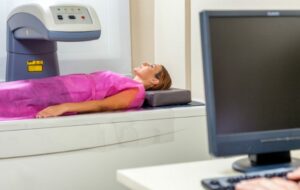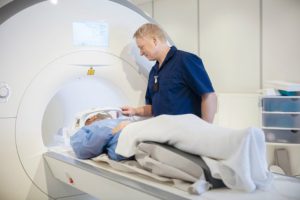Managing Osteoporosis through Early Detection
Osteoporosis is a disorder where over time bone tissue breaks down. This leads to an increase in bone fragility, which may eventually lead to bone fractures. It can be a devastating condition but the good news is that it is preventable.

Managing Osteoporosis through Early Detection

Osteoporosis is a disorder where over time bone tissue breaks down. This leads to an increase in bone fragility, which may eventually lead to bone fractures. It can be a devastating condition but the good news is that it is preventable.
What Causes Osteoporosis?
It is a common misconception that Osteoporosis (and Osteopenia – referring to low bone density in general) affects elderly people only. Osteoporosis affects people of all ages. This condition is caused by failure to attain the peak bone mineral density during childhood and adolescence. In older women, accelerated bone loss usually begins during the menopausal stage.
There are many factors that contribute to bone density loss like improper diet, lack of sleep and exercise or lifestyle habits like smoking. Likewise, there are many underlying causes that cannot be detected with just a simple physical examination.
How Would You Know if You Have Osteoporosis?
Many people only find out that they have Osteoporosis when they experience a broken bone. Nonetheless, this condition can be prevented or even delayed with early detection.
Diagnosis of Osteoporosis is possible based on several factors like family history of the disorder, development of fractures, eating disorders or use of heavy medications. Additionally, there are now different tests available to determine if you have Osteoporosis.
One very important test is Bone Densitometry. This test measures the mineral content of your bones. It can detect the early stages of Osteoporosis. There are different subtypes of test falling under Bone Densitometry. However, one of the most effective is DEXA Scan (Dual Energy X-ray Absorptiometry).
DEXA measures the density of your lower back, your hips and occasionally your wrists. This is a quick, non-invasive and painless test. It can detect Osteoporosis even before a fracture occurs and can help predict the chances of getting fractures in the future. It can also determine the rate of bone loss thus can help greatly at an early stage of prevention. DEXA can be used to identify the different bones in the body that have low density.
How Do You Prevent, Manage and Treat Osteoporosis?
Once you know whether you are prone to Osteoporosis or you already have it, it is imperative that you take certain measures to prevent, treat and manage it.
Osteoporosis prevention and treatment is both medical and non-medical.
Treatment for Osteoporosis involves administration of Vitamin D and Calcium and supplementation of Biphosphonate.
Some doctors would also recommend oral medications like Aledronate, Reloxifene, Risodronate for post-menopausal treatment of Osteoporosis. These medications help stop or delay bone loss, increase bone density and reduce risks of fracture and bone deformity.
For non-medical treatments, there are many things that could help prevent or manage Osteoporosis.
First on the list is exercise. Weight bearing exercise is good for developing your bones and shaping your muscles. Walking and stair climbing in particular are known to be effective and great bone-forming exercises.
Another non-medical treatment is a nutritional diet. Of course food that is rich in calcium and good for calcium absorption like vitamin D should always be part of your diet. Milk and cheese are rich in calcium and should be part of your daily diet.
Finally, consider a change in lifestyle if you smoke. Quit smoking because this actually lowers bone density.
Consequently, it is up to you to take certain steps in preventing Osteoporosis. Do not wait until you experience body pains and fractures before you have yourself checked. Remember, early detection can spell a big difference to your future health.
Read our articles and FAQs
We’re delighted to provide updates on the latest medical imaging technology and answer your most frequently asked questions about our services.









